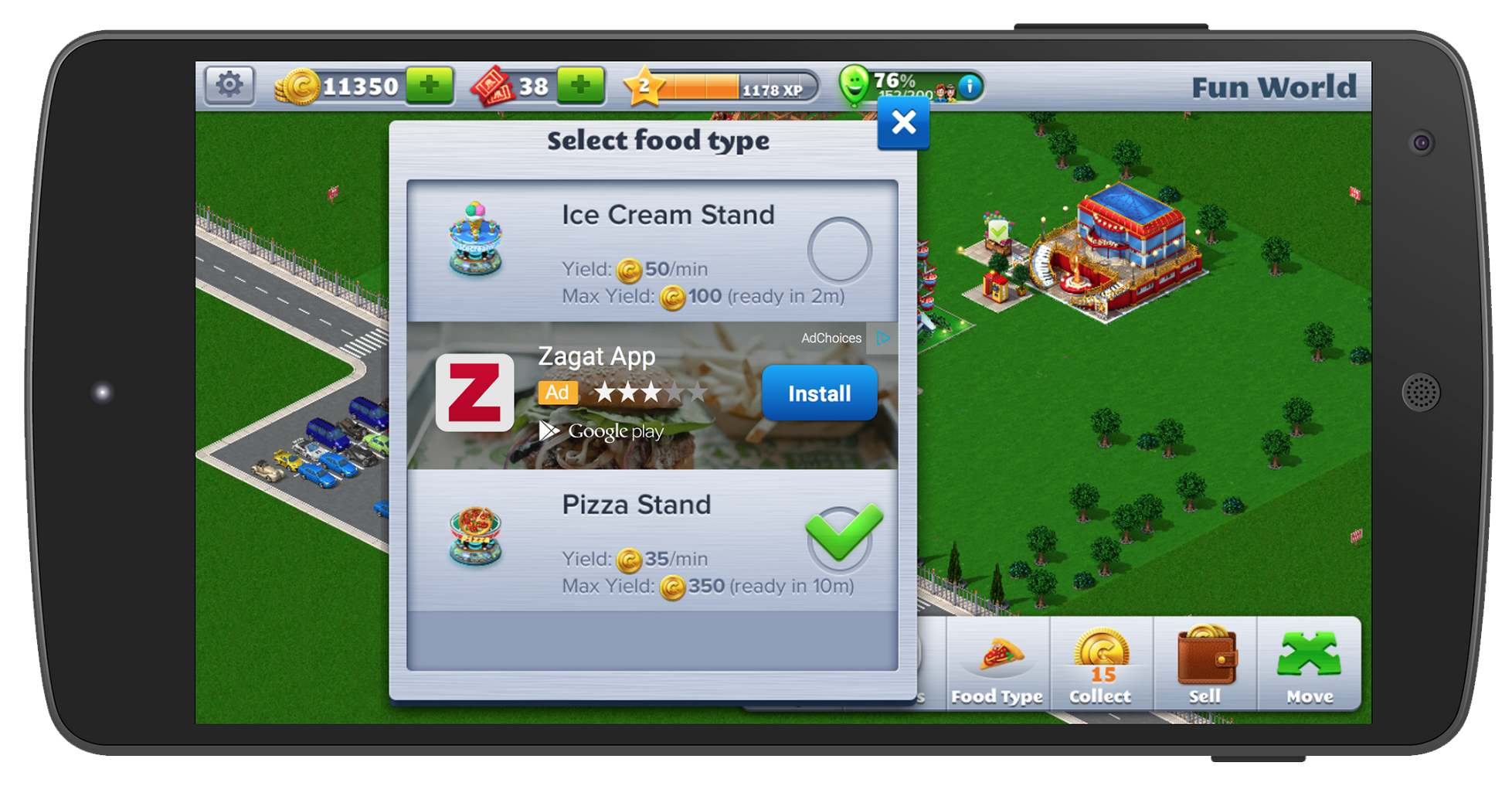In the Freemium era, retention is perhaps the most important measurement of a mobile game’s success. While console games are sold in boxes, rely on marketing, and profit primarily from sales (in addition to ongoing online content/purchases), the bulk of mobile games are free and must begin generating revenue after they have been installed. In-app purchases and advertising revenues make up the vast majority of revenue. The average in-app purchase is made 12 days after first launching an app. During that time the user is likely generating revenue primarily through in-game advertising.
The great FTP (Free-To-Play) game monetization expert Nicholas Lovell (a consultant on Angry Birds Go—the very first FTP game from the conception on) breaks down the FTP game design process into a pyramid of three games which play off of each other: Core Loop, Retention, and Superfan games.

CORE LOOP: The Core Loop is active gameplay: playing matches in Madden, clearing a level in Candy Crush, catching a Pokemon and battling in Pokemon GO. The Core Loop is the heart of the game. Without an engaging Core Loop, a game has nothing on which to build.
RETENTION: The Retention Game revolves around the Core Loop and is everything that instills the user with a sense of progression toward an overarching goal to keep them coming back. It is the scoring mechanisms, the levels, the mechanics which establish progression (commonly the game maps), the narrative in Single Player games like Grand Theft Auto and Assassin’s Creed, the achievement system, and the leaderboards. Retention reinforces positive feelings and a sense of accomplishment from the Core Loop experience. Without an effective Retention game, users will not see any point to the game and will not receive an sense of accomplishment or progression toward a greater goal, and the Core Loop will seem insignificant and fade out.
SUPERFAN: The Superfan gameplay mechanics are catered to those who have developed a significant relationship with the game. They are premium subscriptions, extravagant in-app purchases, add-ons for game’s die-hard fanatics. Many mobile games are designed for casual play and no Superfan game, while other high-budget multiplayer games, like Clash of Clans and Pokemon GO, have very established brands and use Superfan methods to capitalize on their fervent fandom.
While having an addictive Core Loop is the most important building block, Retention reinforces positive feelings about the game, instills a sense of progression toward both immediate goals and overarching goals, and ensures users are feeling rewarded by the time they put into gameplay. Core Loop will get them in the door, while Retention will keep them in the house and lubricate their wallet.
Here are four of the best guidelines for developing retention, including specific methods, for mobile games:
SEDUCE THE USER WITH AN INTRODUCTION
In the highly competitive market for mobile games, games must engage from the introduction. Games with bland introductions will not retain users. An investing opening cut scene, an aesthetically appealing title screen and awesome music/SFX will pay off when they seduce users from the outset to play on and enter the Core Loop.
MAKE THE GAMEPLAY ACCESSIBLE
If a game is too easy or too hard, it won’t be worth the user’s time. It’s important to specify a game’s audience, decide what level of gamer they will be, and make it accessible to them. Tutorials can help introduce game concepts, but when they are too long or restricting, they hurt more than they help. Offering users tips and tricks during loading screens and through push notifications are a clever way of increasing accessibility to new users without infringing on the Core Loop.
REDUCE AVERAGE LENGTH OF SESSION
The STARBUCKS TEST has become common terminology in game developer circles. If the user can’t have a meaningful experience in the time it takes for a barista to make your drink, then the game loop is too long. In mobile games, which are primarily played in the pockets of time where the impatient smartphone owner must wait, it’s vital to have a short Core Loop which the user can complete quickly and come back to throughout the day.
INSTILL A SENSE OF PROGRESSION
While some games, like Flappy Bird, are simple and fun enough to succeed on an arcade level with only high scores, most mobile developers are unable to achieve the same level of competition and must instill a sense of progression in order to retain the user. Whether it’s unlocking new levels or characters or progressing along a game board, the game must congratulate the user frequently in order to reinforce positive feelings about the game. Many games enlist achievement systems in order to give the user tangible goals with rewards outside of the main objectives of the Core Loop.
Read more on Achievement systems here via Gamasutra
Learn more about retention in the YouTube lecture below by Lovell. At 1:11:00, Lovell explains how prototyping the retention game outside of the Core Loop to see if it still feels effective is a great way of testing how effective retention methods.
Ultimately, the two biggest factors which will lead to uninstalls for mobile games are boredom and frustration. The game designer must battle these factors both in the immediacy of the Core Loop and the overarching retention strategies.






